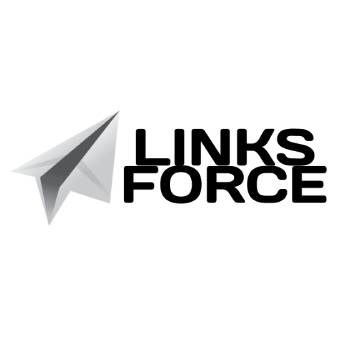
Marketing automation refers to the use of software and technology to streamline, automate, and measure marketing tasks and workflows. This approach allows businesses to effectively manage their marketing processes, from email campaigns to social media management, with minimal manual intervention. By automating repetitive tasks, companies can save time, reduce human error, and focus on strategic initiatives that drive growth.
The essence of marketing automation lies in its ability to enhance efficiency while providing a more personalized experience for customers. At its core, marketing automation is about leveraging technology to improve customer engagement and conversion rates. It enables marketers to segment their audience based on various criteria such as demographics, behavior, and preferences.
This segmentation allows for tailored messaging that resonates with specific groups, ultimately leading to higher engagement levels. For instance, a retail brand can use marketing automation to send personalized product recommendations to customers based on their past purchases or browsing history. This level of customization not only enhances the customer experience but also increases the likelihood of conversion.
Implementing Marketing Automation Tools
Identifying Business Needs and Objectives
First and foremost, businesses must identify their specific needs and objectives. This involves assessing current marketing processes, understanding pain points, and determining what tasks can be automated for maximum efficiency. For example, a company may find that its email marketing efforts are time-consuming and ineffective due to a lack of personalization. By implementing an automation tool, they can streamline their email campaigns and ensure that messages are tailored to individual recipients.
Selecting the Right Marketing Automation Platform
Once the objectives are clear, selecting the right marketing automation platform becomes crucial. There are numerous options available in the market, each offering different features and capabilities. Popular platforms like HubSpot, Marketo, and Pardot provide comprehensive solutions that cater to various business sizes and industries.
Evaluating Key Factors
When evaluating these tools, businesses should consider factors such as ease of use, integration capabilities with existing systems, scalability, and customer support. A well-chosen platform can significantly enhance a company’s marketing efforts and provide a solid foundation for future growth.
Creating Targeted and Personalized Campaigns

Creating targeted and personalized campaigns is one of the most significant advantages of marketing automation. By utilizing data collected from various touchpoints, businesses can craft messages that resonate with their audience on a deeper level. For instance, a travel agency can segment its audience based on travel preferences—such as adventure seekers versus luxury travelers—and create tailored campaigns that speak directly to each group’s interests.
This targeted approach not only increases engagement but also fosters a sense of connection between the brand and its customers. Moreover, personalization goes beyond simply addressing customers by their names in emails. It involves understanding their behaviors, preferences, and pain points to deliver relevant content at the right time.
For example, an e-commerce site can use marketing automation to send abandoned cart reminders to customers who have left items in their shopping carts without completing the purchase. By including personalized product recommendations based on their browsing history, the brand can entice customers back to finalize their transactions. This level of personalization is made possible through sophisticated algorithms and data analysis capabilities inherent in marketing automation tools.
Utilizing Data and Analytics
Data and analytics play a pivotal role in the success of marketing automation strategies. By collecting and analyzing data from various sources—such as website traffic, social media interactions, and email engagement—businesses can gain valuable insights into customer behavior and preferences. This data-driven approach allows marketers to make informed decisions about their campaigns, ensuring that resources are allocated effectively for maximum impact.
For instance, by analyzing email open rates and click-through rates, marketers can identify which subject lines or content types resonate best with their audience. This information can then be used to refine future campaigns, leading to improved performance over time. Additionally, advanced analytics tools enable businesses to track customer journeys across multiple channels, providing a holistic view of how customers interact with the brand.
This comprehensive understanding allows for more effective targeting and segmentation, ultimately driving higher conversion rates.
Integrating Marketing Automation with Other Systems
Integrating marketing automation with other systems is essential for creating a seamless flow of information across an organization. Many businesses utilize various software solutions for customer relationship management (CRM), sales tracking, and content management. By integrating these systems with marketing automation tools, companies can ensure that data is synchronized across platforms, leading to more cohesive marketing efforts.
For example, when a lead fills out a form on a website, this information can be automatically transferred to the CRM system through integration with the marketing automation platform. This eliminates the need for manual data entry and reduces the risk of errors. Furthermore, sales teams can access real-time insights into lead behavior and engagement levels, allowing them to tailor their outreach efforts accordingly.
Such integration not only enhances operational efficiency but also fosters collaboration between marketing and sales teams, ultimately driving better results.
Streamlining Lead Nurturing and Sales Processes

Lead nurturing is a critical component of any successful marketing strategy, and marketing automation significantly streamlines this process. By automating follow-up communications based on lead behavior—such as downloading a whitepaper or attending a webinar—businesses can maintain engagement without overwhelming their sales teams. For instance, a software company might set up an automated email sequence that delivers valuable content to leads over several weeks, gradually guiding them toward making a purchase decision.
Additionally, marketing automation allows for the scoring of leads based on their interactions with the brand. This scoring system helps prioritize leads for sales teams by identifying those who are most likely to convert. For example, a lead who frequently engages with content related to product features may be scored higher than one who only occasionally opens emails.
By focusing on high-scoring leads, sales teams can allocate their time and resources more effectively, ultimately increasing conversion rates.
Automating Customer Relationship Management
Customer relationship management (CRM) is an integral part of any business strategy, and marketing automation can enhance CRM efforts significantly. By automating routine tasks such as data entry, follow-up reminders, and customer segmentation, businesses can free up valuable time for their teams to focus on building relationships with customers. For instance, automated reminders can prompt sales representatives to reach out to leads who have not engaged in a while or follow up after a purchase.
Moreover, integrating marketing automation with CRM systems allows for a more comprehensive view of customer interactions across all touchpoints. This holistic perspective enables businesses to tailor their communications based on individual customer journeys. For example, if a customer has recently purchased a product, automated follow-up emails can provide them with helpful tips or related product recommendations.
This level of engagement not only enhances customer satisfaction but also encourages repeat business.
Measuring and Optimizing Results
Measuring the effectiveness of marketing automation efforts is crucial for continuous improvement and optimization. Businesses must establish key performance indicators (KPIs) that align with their objectives to evaluate the success of their campaigns accurately. Common KPIs include conversion rates, email open rates, click-through rates, and overall return on investment (ROI).
By regularly monitoring these metrics, marketers can identify areas for improvement and make data-driven decisions. Optimization is an ongoing process that involves testing different strategies and approaches to determine what works best for a particular audience. A/B testing is a common method used in marketing automation to compare two variations of a campaign—such as different subject lines or call-to-action buttons—to see which performs better.
By analyzing the results of these tests, marketers can refine their strategies over time, leading to improved performance and higher engagement levels. In conclusion, marketing automation represents a transformative approach to modern marketing practices. By understanding its principles and implementing effective strategies across various aspects—from targeted campaigns to data analytics—businesses can enhance efficiency and drive growth in an increasingly competitive landscape.
